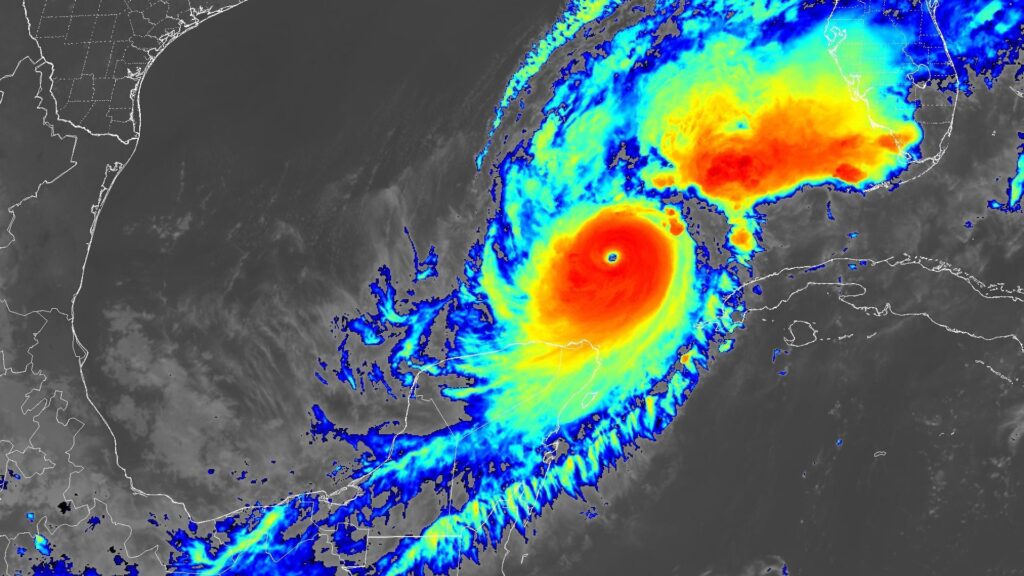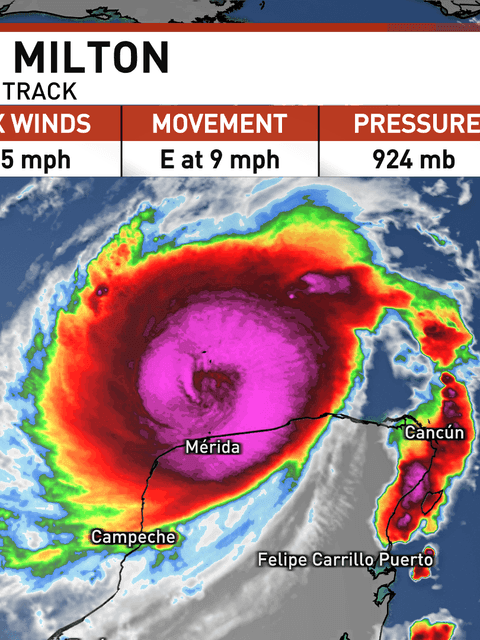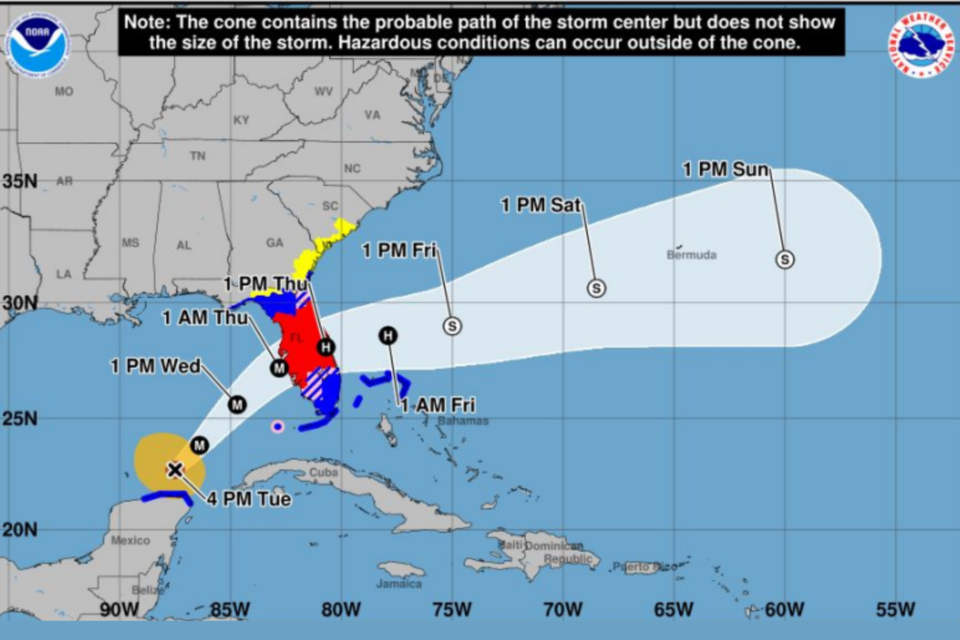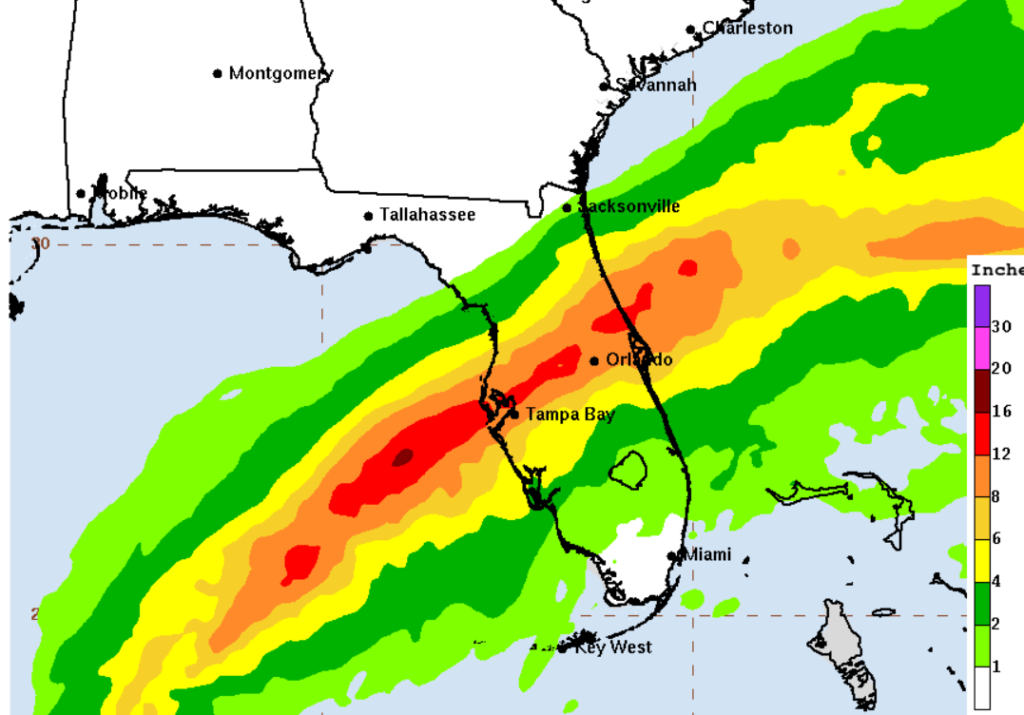When Is Milton Expected to Make Landfall? A Comprehensive Overview of Hurricane Landfall Predictions
When Is Milton Expected to Make Landfall? A Comprehensive Overview of Hurricane Landfall Predictions
The question of when hurricanes or tropical storms, such as “Milton,” will make landfall is a critical one. While “Milton” is a hypothetical storm for this discussion, it serves as a case study for understanding the science behind predicting hurricanes, their impact, and the timeline for landfall. The process involves complex meteorological data, the latest technology, and the expertise of climatologists and storm prediction agencies. This article explores the factors that determine when and where a storm like Milton might make landfall, the challenges of forecasting, and the importance of preparation.
- Understanding the Concept of Landfall

Landfall refers to the moment when the eye, or center, of a tropical cyclone reaches the coastline. This is a critical moment because it often marks the point where the storm transitions from being primarily ocean-based to becoming an inland weather phenomenon. Once over land, the storm begins to lose the moisture supply from the ocean, which weakens it, but it can still cause significant damage through heavy rain, flooding, and tornadoes.
Predicting the exact moment and location of landfall is essential for emergency preparedness, as it allows coastal communities to make critical decisions regarding evacuations, closures, and infrastructure protection. The science of predicting when and where hurricanes like Milton will make landfall has improved drastically over the past few decades, but it still involves a degree of uncertainty.
- The Role of Meteorological Models
Predicting landfall depends heavily on meteorological models, which are sophisticated algorithms that simulate how the atmosphere behaves. These models rely on real-time data from satellites, weather balloons, and radar to track storms. The National Hurricane Center (NHC), among other institutions, uses several of these models to issue forecasts that predict the storm’s path, intensity, and landfall.
The models are continuously updated as the storm progresses, and meteorologists interpret the results to estimate the time and location of landfall. However, storms like Milton can change course rapidly due to various atmospheric conditions, such as wind shear and pressure systems. This variability means that while forecasts have become more accurate, they are not infallible. Meteorologists usually give a range of possible outcomes rather than a single pinpoint prediction.
- Factors Influencing Hurricane Milton’s Landfall Timing
Several key factors determine when and where a hurricane like Milton will make landfall. These include:
A. Sea Surface Temperatures: Warm ocean waters fuel hurricanes. As long as the storm is over warm waters, it can intensify, moving faster or slower depending on the strength of steering currents in the atmosphere. If Milton passes over cooler water, it may slow down or weaken before reaching the coast.
B. Wind Patterns and Jet Streams: Hurricanes are steered by large-scale wind patterns. The presence of high-pressure systems can block or divert storms, while low-pressure systems may draw them in. Jet streams—fast-flowing, narrow air currents—can also affect the speed and direction of a storm like Milton. Changes in wind patterns can lead to shifts in the predicted landfall time.
C. Atmospheric Pressure Systems: Hurricanes tend to move from high-pressure to low-pressure areas. The position and strength of pressure systems in the atmosphere can either accelerate or delay a hurricane’s path toward land. Meteorologists closely monitor these systems to refine their predictions for storms like Milton.
D. Coastal Geography: The shape and features of the coastline can also influence the exact moment and location of landfall. Some coastlines may cause a storm to stall or change direction slightly, impacting when and where it makes landfall. Additionally, local topography, such as mountains or valleys, can affect how quickly a storm weakens once it moves inland.

- The Forecasting Tools Used
To determine when hurricanes like Milton will make landfall, meteorologists use a combination of advanced technology and historical data. The following tools are crucial for forecasting:
A. Satellite Imagery: Satellites provide real-time images of cloud formations and storm movements, helping meteorologists visualize the hurricane’s progress. These images show the storm’s position, the size of the eye, and its outer rain bands, which are indicators of its strength and proximity to land.
B. Hurricane Hunter Aircraft: Specialized aircraft are deployed to fly into the eye of the storm, collecting data on wind speeds, pressure, and humidity. This information is fed into forecasting models, improving the accuracy of predictions.
C. Doppler Radar: Doppler radar is used to measure the speed and direction of the storm. It provides vital information about the intensity of rainfall and wind speeds near the coast, helping officials determine when the outer bands of the storm will begin to affect land.
D. Computer Simulations: Supercomputers run complex simulations to project the storm’s future path based on current data. These simulations are constantly updated as new information becomes available, allowing meteorologists to adjust their predictions for Milton’s landfall time and location.
- The Cone of Uncertainty
One of the most important concepts in hurricane forecasting is the “cone of uncertainty.” This graphical representation shows the likely path of the storm’s center over a given period. The wider the cone, the more uncertainty exists about the storm’s path, especially in the later stages of its trajectory. For example, when a hurricane is still several days away from landfall, the cone is wider because there is more room for changes in its path.
As Milton approaches the coastline, the cone narrows, providing a more specific window for when and where landfall might occur. However, even within this narrower cone, there is still some uncertainty, and small shifts in the storm’s path could result in significant changes in which areas are most affected.

- The Challenges of Predicting Landfall
Despite the advances in technology and modeling, predicting the exact moment and location of landfall remains challenging. Storms can behave unpredictably, and even slight changes in the atmosphere can cause a hurricane to deviate from its expected path. Milton could speed up, slow down, or veer in a different direction than initially forecasted, which is why meteorologists continually refine their predictions as new data comes in.
Moreover, public communication is key in these situations. Even if Milton is not expected to make landfall for several days, officials often issue warnings and encourage early preparations, as last-minute evacuations can be dangerous. The unpredictable nature of hurricanes means that it is better to over-prepare than to be caught off-guard.
- Importance of Preparation and Public Awareness
Knowing when a hurricane like Milton is expected to make landfall is critical, but so is understanding the importance of preparation. Coastal residents must stay informed by following official updates from trusted sources like the National Hurricane Center or local meteorological offices.
Emergency preparedness plans, such as evacuation routes, securing property, and stocking up on essential supplies, should be in place long before landfall is imminent. The unpredictable nature of hurricanes makes it essential for individuals and communities to take action early, even if forecasts suggest that the storm is still several days away from land.

Conclusion
Predicting when hurricanes like Milton will make landfall involves a combination of advanced meteorological models, real-time data collection, and expert analysis. While technology has greatly improved the accuracy of these forecasts, the inherent unpredictability of nature means that a degree of uncertainty always remains. Understanding the factors that influence landfall timing, such as sea surface temperatures, wind patterns, and pressure systems, helps meteorologists provide the most accurate forecasts possible.
For coastal communities, staying informed and prepared is key. By closely following official forecasts and taking early action, individuals can minimize the risks posed by hurricanes like Milton and ensure their safety when landfall does occur.